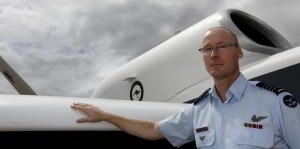|
|
||||||||||||||||||||
|
||||||||||||||||||||
|
Privacy Policy | Editorial Policy | Profit Policy | Join the Association | List of Members | Contact us | Index | Links |
||||||||||||||||||||
|
Back Go to page: 1 2 3 4 5 6 7 8 9 10 11 12 13 14 15 16 17 18 19 20 Forward
|
||||||||||||||||||||
|
|
||||||||||||||||||||
|
Wagga revisited.
Recently we were in Wagga Wagga to attend the GEMS reunion and while there we thought it would be a good opportunity to have a look over the RAAF Base. We put in a request to MediaOps in Canberra who, as always, were very helpful and organised it for us.
Not a lot of the Laverton mob would be familiar with RAAF Base Wagga, it sits about 10klm east of the City of Wagga Wagga, on the Sturt Highway and has been an operational RAAF base since 1940. Until a few years back, it was the training home for all trades except radio/comms, but these days it does the lot, including rookies which has been moved up from Edinburgh. |
||||||||||||||||||||
|
|
||||||||||||||||||||
|
It began
life as RAAF Base Forest Hill on the 29th July 1940, during WW2 and has
been an
In 1952 it was renamed RAAF Base Wagga to identify with the broader community, then the School of Management was established in 1985 (but was disbanded in December 2004) and in 1999 the Ground Training Wing was established and merged with the Point Cook based RAAF College.
Not long after we all survived the year 2000 computer hysteria, big things began to happen at Wagga. The School of Administration and Logistics Training was established in 2005, in 2008 the RAAF College, which was established at Point Cook in 1947 was uprooted and moved to Wagga and the biggest change of all, also in 2008, No 1 Recruit Training Unit, which had been at Edinburgh, was also relocated to Wagga. In December 2009 Ground Training Wing was re-established after splitting from RAAF College and finally No 31 Squadron was re-formed in July 2010 after disbanding in 1946.
Today
there are two Air Force Training Group Wings based at Wagga, the RAAF
College
Wagga is referred to as the ‘Home of the Airman’ due to the presence of Air Force recruit and trade training schools (and to upstage the Army who have called Capooka "The Home of the Soldier"??).
A Brief History of RAAF Wagga.
The first Europeans to settle in the Wagga Wagga area were land holders from around Sydney who had expanded their holdings firstly by moving into the Goulburn area and then in the 1830’s further south into the Wagga Wagga area. Although at first as illegal settlers, from 1836 these squatters were able to obtain licences to graze stock on their runs. Their demands for security of tenure resulted in them being granted fourteen year leases and then the right to purchase unlimited areas of land at a minimum price of £1 ($2) an acre. A Charles Tompson and his sons Frederick and Edwin took up land on the north bank of the Murrumbidgee River. Soon after, a former convict, George Best along with his sons, took up land on the southern side of the Murrumbidgee but a disastrous flood in 1852 caused them to move to higher ground a bit to the west. The settlement began to grow.
In 1849 the ‘town’ of Wagga Wagga was planned by Surveyor Thomas Scott Townsend, who, for unknown reasons, designed the town in the flood prone area straddling north and south of the Murrumbidgee River instead of the higher land at Gumly Gumly, just a short distance east where a comparable settlement of a few stores and houses also existed at the time.
The name 'Wagga Wagga' was taken from an Aboriginal word or words "Wahga" or "Wahgam" meaning 'a place of many crows'. The local Aboriginals did not have a method of pluralising a word. In English we simply add an S, whereas the Aboriginals on the other hand repeat the word to indicate two or more, for instance, they would say Dog to indicate one dog, but Dog Dog to indicate more than one dog – which is why we have Wagga Wagga – to indicate more than one crow.
The township began to grow but major floods in 1852 and 1853 required it to be moved to the south side of the river, then on the 15th March 1870, when the population of the district numbered about 1,200, the Municipality of Wagga Wagga was formed. A courthouse, schools, churches, a hospital, flour mills, breweries and other industries quickly followed. |
||||||||||||||||||||
|
|
||||||||||||||||||||
|
Baylis St, Wagga’s main street, 1897. |
||||||||||||||||||||
|
Following the end of the First World War, an increase in the local population resulted from the Soldier settlement program. Many soldiers were mistakenly settled on the land as there was a misconception that most of them had come from the bush and secondly that Australians were natural farmers. This settlement was, in the main, a complete disaster as most WW1 soldiers had come from Urban areas and a lot had settled onto blocks that had not previously been taken up because they were too small and/or too dry to support a family.
After a few years, faced with crippling debts and unable to earn a living, many simply walked off the land.
This increase in population gradually turned Wagga Wagga into an important rural service centre and it was not long before the local authorities realised that air transport was an important necessity for the district’s development. The Wagga Wagga Municipal Council subsequently developed an airport at Forest Hill on the Sturt Highway which opened in 1938 and the fledging airline, Australian National Airlines began a daily service between Sydney, Canberra, Wagga Wagga and Melbourne.
|
||||||||||||||||||||
|
|
||||||||||||||||||||
|
|
||||||||||||||||||||
|
In 1939 the world was at war once again and Wagga Wagga was a key centre in the Federal Government's Defence plan. In July 1940, the RAAF took over the Wagga Wagga airport and thousands of young service men and women were trained at the Base.
In 1940
No 2 Service Flying Training School began operations (2SFTS) and No 5
Aircraft
A WAAAF with an ambulance attached to 1 RAAF hospital, 1942. If you could survive a ride in that thing you could survive anything!!
From Romano’s, 2 Training Group controlled all flying ops including No 8 Elementary Flying School at Narrandera (about 100klms WNW Wagga Wagga), No 10 Elementary Flying School at Temora (about 90 klms north of Wagga Wagga), No 1 Air Observers School at Cootamundra (about 100klms NE of Wagga Wagga) and No 2 Communication Flight which operated at the Gumly Civil Aerodrome. The Wagga Wagga Show-ground was used as a temporary camp for recruits from June 1940 until February 1941. Two exhibition Halls on the Show-ground, the Hammond Hall and the Kyeamba Smith Hall were converted into sleeping quarters and the sheep pavilion was converted into a dining room. Eventually about 1,000 recruits were stationed at the camp.
|
||||||||||||||||||||
|
|
||||||||||||||||||||
|
|
||||||||||||||||||||
|
A permanent Army camp was established at Kapooka (Now Blamey Barracks) about 9.5 klms south west of Wagga Wagga. At Kapooka, the Army combined six of the seven engineer recruit training centres [excluding the West Australian centre] into one major Royal Australian Engineers Centre. From July 1942, over 47,000 AIF engineers were trained in basic soldier skills as well as field work [mainly demolitions and bridging]. Kapooka was also used as a transit camp for some members of the Australian Women's Army Services [AWAS] and until November 1943 as a base for the First Australian Anti-Aircraft Search-light Training Regiment which at its height had 400 women recruited from all over Australia.
By 1943 there were 8000 troops stationed at Kapooka and it was one of the largest military camps in the Commonwealth.
|
||||||||||||||||||||
|
|
||||||||||||||||||||
|
At the end of the war, the Kapooka Army Camp, the flying school at Uranquinty, 1 RAAF Hospital and Head Quarters No 2 Training Group at the Commercial Hotel (Romano’s) were all disbanded however the Forest Hill RAAF Base continued as an important training centre. The crude huts used for accommodation during the war years were replaced by two and three storey barracks in the 1960s. Uranquinty was reopened again in 1951 for pilot refresher courses but closed for good in 1958 when everything was moved to Point Cook.
Kapooka was re-opened as a basic training centre in 1951 when the 1st Recruit Training Battalion (1RTB) was established. During 1952 and 1953, 1RTB was joined by 2nd Recruit Training Battalion in temporary buildings on the ridge south of the main camp and in the 1960s more permanent mess buildings and barracks [named Blamey Barracks] were built to replace the galvanised iron and weatherboard structures.
During the war years, aircraft design advanced at
an enormous rate. Prior to the War, the
5AD was disbanded in 1946 but the engineering facilities, including the Belman Hangars were left behind awaiting future use. To train and prepare its technicians for the modern aircraft that the RAAF had in the pipeline, in 1946 it moved No1 Engineering Training School from Ascot Vale in Victoria to the now vacant hangars at Wagga, renaming the school “The Ground Training School” and establishing Wagga as the RAAF’s centre for aircraft trade training. In 1950, it renamed the School to the RAAF School of Technical Training (RAAFSTT). From its inception, the School has focused on delivering capable technical tradespeople to maintain the RAAF’s operational edge.
In 1948, the first apprentice scheme was commenced at Wagga. This continued without interruption to provide a steady flow of keen, trained young men (and in later years, young women) who would form the technical backbone of the service until in 1993, following the technical trade restructure, it was (sadly) disbanded.
As it turned out, the 1960’s will be remembered as a decade of vast re-equipment. Never before had the RAAF had to absorb such a variety of sophisticated and costly equipment. The training of the men and women to fly the aircraft and the technicians to maintain the equipment placed a heavy burden on the RAAF.
In November 1971 RAAFSTT took a unique and privileged place in Air Force history by being the first unit to be awarded a Unit Queens Colour. Presentation of the Queens Colour to RAAFSTT recognised the school’s enviable record of training thousands of servicemen and women in a wide range of specialties. The Colour is honoured as a symbol of the trust the Queen reposes in the School and as an emblem of achievement.
In 1996 the role of the School expanded
significantly following its amalgamation with the RAAF School of
Clerical and Supply Training. In 2005 this element of the School was
terminated and then reformed as the RAAF School of Administration and
Logistics Training. In 2013 the Air Force entered a contract with the
Defence Aeroskills Training Academy,
Today, the RAAFSTT is one of the most diverse training units in the ADF. The School has an annual throughput of around 1100 trainees and students and is responsible for the conduct of over thirty different technical courses. Graduates of RAAFSTT maintain aircraft, aviation components, avionics, armament systems, life support equipment for aircrew and other technical equipment, in addition to managing maintenance processes at all levels. As well as training men and women to work on the RAAF’s aircraft, Wagga also trains future aircraft technicians for the Australian Army and the Navy, as well as students from other countries’ Defence Forces. The Australian Army and Navy personnel do their basic aviation training at Wagga then return to their own units to be trained on type. This system seems to work extremely well.
Courses conducted at RAAFSTT include:
|
||||||||||||||||||||
|
||||||||||||||||||||
|
Wagga’s biggest challenge came in 1997 when the Minister for Defence, Ian McLachlan, in his wisdom, announced his intention to close the Base as part of a rationalisation of the ADF. This, of course, caused an unholy uproar and Mr McLachlan and the Government were told in no-uncertain terms where to get off. An organisation called “Save Our Base” was formed and by 2000 this decision was on the cutting room floor.
It had been many years since I had been to Wagga, the last time was back in 1972, when in a different life, this time working for DCA, I had worked at the Flight Service Unit/Pilot Briefing Office. The building still stands, though these days it is occupied solely by the Aerodrome’s radio techs. Flight Service went some years ago, thanks to that grazier who also makes peanut butter, and pilot briefing is no longer provided on a face to face basis, instead, pilots obtain their own flight information and lodge their flight plans via the internet on their tablet or smart phone.
|
||||||||||||||||||||
|
|
||||||||||||||||||||
|
I still think the personal method was the better way to handle it, you got to meet and chat with the pilot before his/her flight, he or she got to meet you and each party was able to put a face to the voice on the radio. Pilots were given a Pre-flight Information Bulletin (PFIB) on a face to face basis, the PFIB contained weather information, notams and anything else relevant to the flight in question. You could also obtain flight conditions from previous flights and pass them on, on the whole, I think it was a safer way to handle things – but alas, tis all gone now!!
Ah, the good old days!!!!!
The Tour.
On Friday
the 4th September, Kev Weatherspoon, Geoff Spackman and
Geoff joined the Royal
Australian Air Force in 1977 as a Radtech trainee. To some surprise,
including his own, he graduated and was employed maintaining Macchi,
Caribou and Iroquois aircraft at 2FTS in
Commissioning as an
Engineering Officer in 1990, he was posted to 1AOSS, where he was sent
bush for 2 more years. After regaining his sense of humour, he served at
84WG with Air Lift Group and then Headquarters Air Command. On promotion
to Squadron Leader he was able to complete the full maintenance circle
on the Caribou Aircraft by being appointed as the Senior Engineering
Officer at 38 Squadron, for which was awarded a Conspicuous Service
Cross. He trained as an Air Safety Investigator in 2002 and spent three
years conducting investigations at the Defence Flying Safety
Directorate. He then completed the 2005 Australian Command and Staff
Course, and graduated to his first command No 27 (City of
On promotion to Wing Commander he was employed within Logistics Branch - Air Force Headquarters implementing the revised Air Force Maintenance Governance System. He was privileged to be selected to his second command, the RAAF School of Technical Training which further reinforced to him the enabling power of team work. For this and other posts he was awarded an Order of Australia Medal. He likes to think while only one person gets to wear a medal, there is always a large number of incredibly talented people involved.
In 2010 he was appointed Deputy Director Engineering and Technical in Personnel Branch and in 2013 was promoted into the Director position. DP-AF taught him just how big, diverse and powerful our organisation is. For 2014 he was offered his third command as Officer Commanding Ground Training Wing, naturally accepting with both hands.
He is married to his best friend Gina Maree and is a devoted uncle to Eamon, Marlee and Riley. He likes walking, gardening and wine degustation dinners.
We were obviously in very good hands for our tour of the base.
Wagga’s front gate area, with its bygone era aircraft, has obviously had a spruce up as it looks magnificent and is very welcoming. People can come and spend time looking through the Heritage Centre, (in the old Guard Rooms), which is open from 10.00am to 4.00pm on Wednesdays, Saturdays and Sundays, or they can just spend time looking over the 5 aircraft on public display and which represent over 60 years of RAAF flying history. There is plenty of parking space and tables and chairs too should they wish to sit and have a snack.
|
||||||||||||||||||||
|
|
||||||||||||||||||||
|
The
Heritage Centre was a concept proposed by a group of enthusiasts headed
by
Wing
After producing our ID’s to the civvy guards (no more guard duty for the troops) we were presented with our visitor’s passes and boarded Geoff’s vehicle to start the tour. The long road from the main gate down to the centre of the Base is called Newton Rd, named after Flt Lt William (Bill) Newton who was awarded a posthumous VC for service with 22 Sqn in New Guinea in 1943.
In
1917, NSW Railways opened a 130klm long branch line from the Wagga Wagga
Railway Station south east to the small town of Tumbarumba. On its way
to Tumbarumba the line
The railway line as it was back in 1957. This was originally the entrance to the operational area of the Base, the road, being Newton Rd, leads back to the old Guard Room.
When the RAAF took over the airport during the War, they built a siding on the line from which they transported goods and troops to and from the Base. The operational section of the base was all south of the line with the living quarters and social areas built north of the line.
For many years the trains ran through the middle of the Base. In 1974 a significant flood damaged a large portion of the line east of the Base which was then abandoned. The occasional train continued to run from Wagga Wagga out to Ladysmith, the next stop east of the Base until the whole thing was closed in 1987.
All of the line within the Base confines has now been pulled up and all that is left is a small hump in the road where it once crossed the line and built up corridors leading off left and right from the roadway where the lines once laid.
|
||||||||||||||||||||
|
|
||||||||||||||||||||
|
The old line looking east (above) and looking west below.
|
||||||||||||||||||||
|
There is a proposal to turn the abandoned line from Wagga Wagga out to Ladysmith into a bike track, though how they would get on once they hit the fence of the Base is another question. You can bet a diversion would be required.
Wagga
used to be Appy-land. On Monday, the 2nd February 1948 the
first group of 53
The old Appy-land living quarters have long gone and there is now not much left on the base to indicate that the scheme ever existed. Even the old Shanty Hotel, the Appy’s hotel of choice (they were not allowed to drink on base, off base - in fact anywhere) which is a few klms down the Sturt Hwy towards the Hume Hwy, has closed down. Not to be denied, the Appies would head off on foot across the ovals and hot-foot it down to the Shanty for a quiet one or six.
|
||||||||||||||||||||
|
|
||||||||||||||||||||
|
After we left the main gate, with Geoff Kimmins at the helm, we stopped off to have a look at the recently reconditioned F-111 which will eventually join the other aircraft on display at the entrance to the Base. Murray Kaufmann had stayed around to open the hangar for us to have a look at arguably one of the best looking military aircraft that has ever flown.
Murry told us that eventually there will be a glass building erected at the front gate to house the F-111, but the non-availability of funds is holding things up. He doesn’t mind, an aircraft that doesn’t move or even go out of the hangar is very easy to look after.
From the F-111 we stopped off at the Base’s gym. Physical fitness plays a vital role in the Australian Defence Force these days and recruits are required to possess a pre-determined standard before they are accepted into any of the ADF Services. Most ADF Bases now have very well equipped gyms each run by PTI’s and Wagga is no different.
|
||||||||||||||||||||
|
|
||||||||||||||||||||
|
Part of the Gym’s sporting fields and “torture track.”
Australian Defence Force sporting facilities are world class and Wagga personnel have unrestricted access to the Gym with its state-of-the-art weights and cardio machines and are encouraged to participate in the available sports played on the base.
|
||||||||||||||||||||
|
|
||||||||||||||||||||
|
|
||||||||||||||||||||
|
The troops at Wagga also have access to football ovals, basketball and tennis/squash courts and a swimming pool and the gym building is constantly being used by groups from the various training regimes on the Base.
All enlisted airmen and women have to undergo 13 weeks recruit training (“rookies”) at Number 1 Recruit Training Unit (1RTU) where men and women are transformed from civilians to RAAF personnel. At the end of successful training, recruits are “passed out” at a Graduation Parade.
The RAAF formed 1RTU back in 1954 at Richmond, then in 1958 it was moved to Rathmines (just south of Newcastle) then down to Wagga in 1960, then in 1964 further south to Edinburgh, and in 2008 it was moved back to Wagga. Originally, 1RTU was for men with the women being inducted into the Air Force through a WRAAF Recruit Training Flight (WRTF) at Point Cook. In 1965 the WRTF moved down to 1RTU at Edinburgh then in 1977, when the WRAAF were absorbed into the RAAF, the WRTF was renamed the Women’s Training Unit (WTU) and was moved to Tottenham, then to Laverton. In 1981 the WTU was disbanded and the girls joined the men at Edinburgh until everyone moved back to Wagga.
The men
originally did 12 weeks at 1RTU while the girls did only 4 (were they
smarter??) but now both men and women do the same 13 weeks course, live
in the same blocks and graduate together. 1RTU can train up to 1,200
recruits each year in very modern facilities
We were shown over 1RTU by its CO, the lovely WGCDR Jules Adams. Jules was born in 1969 and grew up near Marlborough, in England. She enlisted in the Royal Air Force in 1989, where she undertook a variety of administrative and out of category assignments before commissioning in 1998 as an Administration Officer. In 2001, she resigned from the RAF to join her Australian husband in Adelaide. She was appointed to the RAAF in 2002 and was posted to No 1 Recruit Training Unit as a Recruit Flight Commander. Between January 2004 and 2009, she was the Administration Officer at Number 381 Expeditionary Combat Support Squadron, the Military Support Officer for the Hunter Region and Staff Officer Personnel at Headquarters Air Combat Group. During this period she also deployed to the Australian Air Force Task Group 633.2 in the United Arab Emirates and to the Headquarters Joint Task Force 633 in Baghdad.
In 2010, she graduated from the Australian Command and Staff College with a Masters in Strategy and Management. She was selected as Staff Officer to the Deputy Chief of Air Force and was subsequently appointed Staff Officer to the Chief of Air Force in June 2011. In April 2012, she was posted to Headquarters International Security Assistance Force in Kabul and returned in October 2012 as Deputy Director Air Operations within the Directorate of Personnel – Air Force. In December 2014, she was appointed Commanding Officer No 1 Recruit Training Unit.
Jules is
the first woman to take over the reins at RTU – and about time too.
WGCDR Jules Adams is married to GPCAPT Guy Adams, the Director of Unmanned Aerial Systems (right). Her interests include travel; camping and trekking; skiing; health and fitness and reading.
|
||||||||||||||||||||
|
If Men Ever Got Pregnant! Morning sickness would rank as the nation’s number one health problem.
We must thank Jules, who went out of her way to give us an excellent and comprehensive look over her unit of which she is very proud. We started our tour with a look through the brand new blocks in which both the men and women live. Recruits are required to live in for the entire 13 weeks. Accommodation is dormitory style, with four persons to a room with communal shared amenities “down the hall”. Recruits must “panic” daily and are subject to having their blocks and the shared facilities inspected daily.
|
||||||||||||||||||||
|
|
||||||||||||||||||||
|
We have to feel a bit sorry for Steve Christian. Steve had been in the RAAF for a total of 6 weeks, was about half way through his Rookies’ course and at lunch time was alone quietly hanging out in his room, which he shares with 3 other mates, when in pops Group Captain Geoff Kimmins, his CO, Wing Commander Jules Adams and 3 civvies with cameras strung around their necks. Until then, Steve had probably never had contact with anyone above the rank of Cpl and you have to wonder what went through his mind that instant when he was confronted by two senior Officers in his own little room – what you did in that situation hadn’t yet been explained to him.
After he’d got over the shock and had composed himself, Jules explained to him who we were and asked if he’d mind if we had a look around his room, to which of course he hastily agreed. Steve opened his locker for us to have a look and what we saw was what we expected, everything neat and tidy, spotlessly clean, all the gear right-dressed and lined up accordingly, with not a bit of civvy gear anywhere.
|
||||||||||||||||||||
|
||||||||||||||||||||
|
|
||||||||||||||||||||
|
They would serve beer instead of coffee at antenatal classes.
|
||||||||||||||||||||
|
Bed rolls are no longer required though, today the bed is just neatly made.
We had a quiet chat with Steve just before we left, thanked him for his time and hoped we hadn’t given him too much of a surprise. He in turn told us even though he hadn’t been in long, what he’d seen so far of the RAAF he was loving and was looking forward to making it a career. We wished him all the best and assured him it gets a whole lot better once you leave rookies and get into the real Air Force. He’ll definitely have something to talk about at the next smoko!!
Jules then showed us the facilities available for the rookies, some things have definitely changed for the better!
|
||||||||||||||||||||
|
|
||||||||||||||||||||
|
No more walking out along the open veranda to the wash room with its open shower stalls, the rookies’ facilities at Wagga are five star.
|
||||||||||||||||||||
|
Maternity leave would last for two years with full pay.
|
||||||||||||||||||||
|
|
||||||||||||||||||||
|
The old Lightburns have long gone, as are the super–heated drying (exchange) rooms, instead, today’s recruits enjoy the latest and the best front loader washing machines and tumble dryers, all just down the corridor too.
|
||||||||||||||||||||
|
|
||||||||||||||||||||
|
But not everything has changed. Drill is still a big part of a Rookies’ day, but from (a long) memory, it wasn’t too bad, it instilled a sense of competitiveness in you, you were always trying to be better than the other course, a method in RTU’s madness perhaps??
|
||||||||||||||||||||
|
Children would be kept in the hospital until toilet trained.
Lecture rooms have entered the 21st century too, Rookies are taught via computer terminals, no more Moody Institute films shown on the old Bell and Howell. In these rooms, Rookies are taught teamwork, self-discipline, 'esprit de corps' and respect for the values of the Air Force.
|
||||||||||||||||||||
|
|
||||||||||||||||||||
|
Instructional staff at 1RTU, which includes Military Skills Instructors (MSIs), Airfield Defence Guards (ADGs) and Physical Training Instructors (PTIs), as well as other support staff, instil in their students all the aspects of Air Force values – Respect, Excellence, Agility, Dedication, Integrity and Teamwork.
But life for the Rookie isn’t all work with no play, they have their own “Boozer” and “games room”.
|
||||||||||||||||||||
|
|
||||||||||||||||||||
|
And as the idea is to keep the Rookie apart from those “bad-influence” people in the real Air Force, Rookies have their own well-equipped and air-conditioned gym which they don’t have to share with anyone.
|
||||||||||||||||||||
|
|
||||||||||||||||||||
|
Following successful completion of recruit training and having experienced their graduation/passing out parade, most graduates go on to their next course of training but they all receive their first taste of Air Force at 1RTU. With everything now at Wagga, it’s a simple matter of leaving the RTU blocks and moving over to the RAAFSTT blocks, easy. This must save the RAAF thousands in not having to move 30 or more troops from Edinburgh to either Laverton or Wagga every month.
The RAAFSTT is managed by the Defence Aeroskills Training Academy (DATA) which is managed by BAE Systems and its partners, RMIT University and Pennant Training Systems. BAE Systems is Australia's largest defence and security company and for more than 50 years has been designing, maintaining and integrating systems for the ADF. DATA was introduced to Wagga in March 2013 to provide initial and postgraduate training to more than 1,000 aircraft related technical trainees each year. DATA delivers state of the art training which includes some of the most advanced training aids and tablet devices (similar to an iPad) to meet students learning styles and ensure the most effective outcomes are achieved. New training aids are being incrementally introduced. The first Integrated Avionics Maintenance Trainer (IAMT) and Generic Flying Control Trainer (GenFly) devices, the first of their type in Australia, arrived in April 2015. Backup IAMT and GenFly trainers are being installed now.
Once a week, RTU staff of all ranks get together in their “de-briefing room” to discuss progress and formulate future plans.
|
||||||||||||||||||||
|
|
||||||||||||||||||||
|
This informal atmosphere allows the training staff to discuss any problems they have, or they see which could arise, with their contempories and/or with the directorate and formulate corrective action before the problem escalates.
It works very well.
|
||||||||||||||||||||
|
Sons would have to come home from dates by 9 pm.
|
||||||||||||||||||||
|
|
||||||||||||||||||||
|
|
||||||||||||||||||||
|
L-R: LCDR Andrew Patmore, Rob McNeil, Chris Hudson – BAE Systems RAAF Wagga.
We were then introduced to the 3 men who administer DATA on the Base and who had volunteered a big part of their day to show us the various hangars where students are taught for the next 57 weeks.
We thank them for that…
As Wagga is now a tri-Service training base, Army, Navy and RAAF trainees all commence their aviation training in the “barbecue” hangar, obviously named from the appearance of the training aids.
|
||||||||||||||||||||
|
|
||||||||||||||||||||
|
Trainees are here introduced to levers, rods, turn-buckles, lock-wiring etc, systems where a force applied in one direction can be increased or decreased then actuated at right angles to the direction of input, essential knowledge for working on aircraft control surfaces. They also learn how tool boards are used, how and why it is essential to always know the whereabouts of any particular tool and why each tool removed from the tool board is tagged. Nothing worse than having a 12 inch shifter flying around your cock-pit when you’re putting an F-18 through its paces!!
Once they had mastered this class, trainees are moved across the concrete to another hanger where they learn how to file, bend, join, drill and cut bits of metal in a workshop that can only make you drool with envy.
|
||||||||||||||||||||
|
|
||||||||||||||||||||
|
After that, it is time for those heading down the engine/airframe route to start and play with some aero engines, while the queer trades blokes’ and blokettes go another way. Noticeable was the fact that while there was a lot of engines in that hangar, there was not one piston engine in sight, Sumpies these days are taught jet engines only.
|
||||||||||||||||||||
|
|
||||||||||||||||||||
|
It is all very well to work on an engine while it is on a stand, that’s easy!! Once they have mastered that part of the course and are comfortable with the workings of an engine, trainees are introduced to various aircraft to see how the engine is attached to the aircraft, to learn how the engine is managed, how to access it, how to get it out of the aircraft if necessary and how to diagnose a fault.
|
||||||||||||||||||||
|
|
||||||||||||||||||||
|
|
||||||||||||||||||||
|
All methods of birth control would become 100% effective.
|
||||||||||||||||||||
|
|
||||||||||||||||||||
|
We saw a bunch of Army blokes in the midst of their course, they will learn the same principals as their RAAF counterparts and will then head off to Oakey (near Toowoomba) where they will learn the helicopter systems.
And while the Sumpies go the engine route, Framies go to the other side of the hangar for instruction on Pennant’s GenFly training device.
|
||||||||||||||||||||
|
|
||||||||||||||||||||
|
With fewer aircraft being made available for teaching purposes, a potential training gap is emerging when it comes to the practical, hands on elements of technical training. GenFly is a unique flying controls training system that provides a safe and effective environment to train aviation technicians. It comprises a facsimile airframe, consisting of an open frame aircraft structure and a representative cockpit fitted with controls and indicators. The layout is similar to a generic modem fast-jet aircraft. GenFly supports a complete range of hands-on maintenance activities for aircraft hydraulics, flying controls, landing gear and services. The open sides allow access and enables the student to see what’s happening to the primary and secondary flying control systems, landing gear systems and auxiliary systems, including nose-wheel steering and wheel braking.
Hydraulics control surfaces and landing gear systems are activated by electro-mechanical devices controlled by computer software. Each connection of the hydraulic and electrical system is monitored allowing the system to reproduce the effect of a correct or incorrect connection / disconnection and to enable the Instructor to fully monitor a student’s progress.
Blokes and blokettes who favour the avionics trades (radio, inst, elec, gunny) don’t go through the engine/airframe hangar where there is the possibility of one getting one’s hands dirty, instead they go to the Integrated Avionics Maintenance Trainer (IAMT) which is situated in a quiet air-conditioned room, away from the noisy old, open-aired sumpie/framie hangar.
|
||||||||||||||||||||
|
|
||||||||||||||||||||
|
The IAMT provides basic and advanced training in front-line integrated avionic systems maintenance, fault diagnostic procedures for operation of aircraft controls and systems and repair of integrated avionics systems by replacement. No longer are black boxes pulled apart looking for faulty components. If a transmitter fails, you just rip out the Tx card and replace it with another one. Halleluiah!!! The IAMT provides students with generic cockpits on which to practise the execution of maintenance procedures, exercise fault finding techniques and carry out testing procedures.
|
||||||||||||||||||||
|
|
||||||||||||||||||||
|
Kev Weatherspoon getting to know the cockpit of the IAMT BAE Hawk.
|
||||||||||||||||||||
|
As well as working on the mock-ups in hangars, students do get to train on “real” aircraft, a Nomad and a couple of Wessex helicopters are available for instructional purposes.
|
||||||||||||||||||||
|
|
||||||||||||||||||||
|
As it was now past midday, Geoff Kimmins suggested we head for the Airman’s mess and join the troops for lunch.
|
||||||||||||||||||||
|
|
||||||||||||||||||||
|
Unlike other bases to which we have been, the Airman’s Mess at Wagga was very well attended, possibly because the standard of food provided was excellent.
|
||||||||||||||||||||
|
|
||||||||||||||||||||
|
The multi-choice hot food bain-maries.
|
||||||||||||||||||||
|
|
||||||||||||||||||||
|
The self help salad bar.
|
||||||||||||||||||||
|
|
||||||||||||||||||||
|
Ex Army Brat (Balcombe) Geoff Spackman, who was one of the path-finders into Vietnam in 1965/66 enjoying his RAAF meal and was probably thinking “I knew I should have joined the RAAF.”
|
||||||||||||||||||||
|
Geoff Kimmins joined us for lunch and we sat with a bunch of blokes who were under training at the Base. The young blokes were a bit apprehensive at first, after all, an AC does not normally dine with a Group Captain, but Geoff quickly put them at ease and the banter eventually flowed freely. Geoff explained to them that the Air Force offered a wonderful future for those that wished to work at it, he explained how he started out as a trainee Radtech, just like them and through a bit of hard work, some study and keeping your nose clean, that anyone could imitate him and obtain senior officer status.
It was interesting to hear the young men speak of their experiences in today’s Air Force and for them to tell us what they thought of the conditions and training they were receiving – all of which was favourable. Some will remember that lunch, it was an epic event for them and a few years in the future, one or more will make a decision based on that memory and commence the ascent up the ranking ladder.
As Kev Weatherspoon was to say later that day, with young people like that in the ADF, our future is in pretty good hands!!
|
||||||||||||||||||||
|
|
||||||||||||||||||||
|
One feature at the Mess which we saw and which we think is a master stroke, is the self-help barbecue. This is fired up for Friday dinner and airmen/women can stand around the barby with their mates, cook their own steaks and then sit and eat their dinner and even enjoy a wine. The Airman’s Mess is a BYO facility on Friday nights – how wonderful!!!
It was then time to say our good-byes and head back to our digs in Wagga. We must thank Geoff Kimmins and Jules Adams for giving up their day and showing us around their base.
|
||||||||||||||||||||
|
|
||||||||||||||||||||
|
|
||||||||||||||||||||
|
Thanks also to Wing Commander Kris Johnston, CO of 31 Sqn (Base Sqn) for putting together the program. It was all greatly appreciated.
|
||||||||||||||||||||
|
|
||||||||||||||||||||
|
A blonde goes into a library and tells the girl at the desk, "Hello. I'm here to see the doctor." The librarian replies, "This is a library." So the blonde lowers her voice and says, "Oh sorry!" Then whispers, "Sorry, I'm here to see the doctor." |
||||||||||||||||||||
|
|
||||||||||||||||||||
|
|
||||||||||||||||||||
|
Back Go to page: 1 2 3 4 5 6 7 8 9 10 11 12 13 14 15 16 17 18 19 20 Forward |
||||||||||||||||||||
|
|

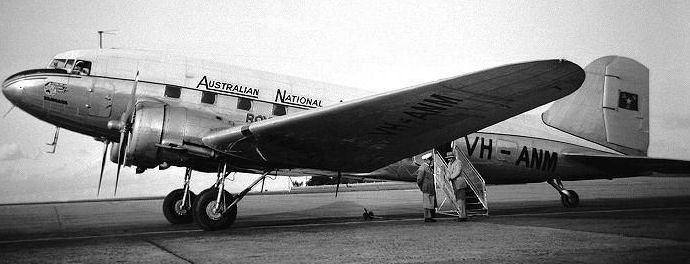
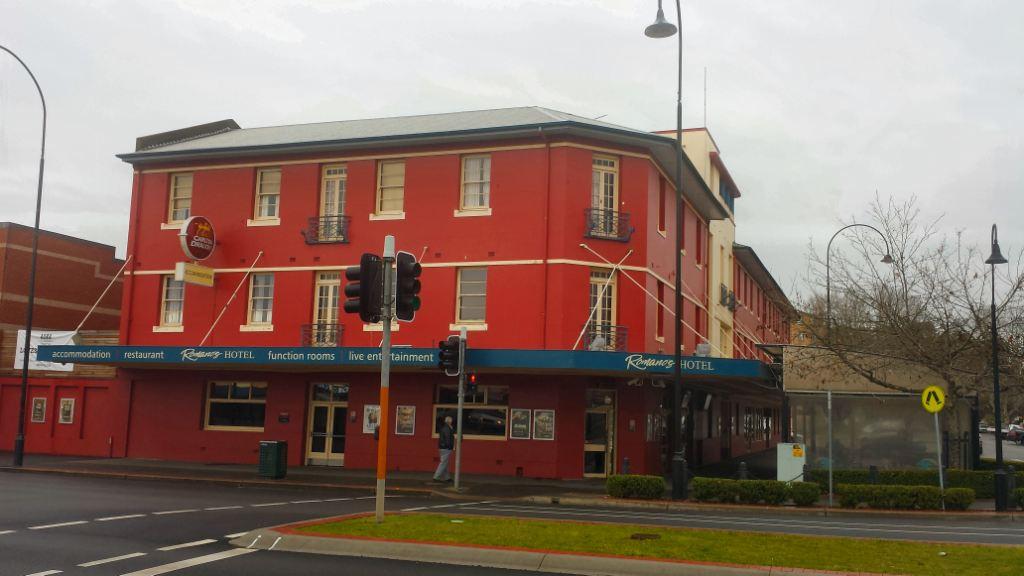 Depot (5AD) was established to repair and maintain aircraft and new
aircraft which were being rolled out from factories were flown to Wagga Wagga
to be fitted with armament and radio equipment. In 1942, number 1 RAAF
hospital, which had been established at Laverton in 1940, was moved
north to Wagga Wagga and Number 2 Training Group, which co-ordinated the
flying training at the various airfields in the area, was moved in in
May 1942. It had its headquarters atop the Commercial Hotel, (later
renamed Romano’s). Romano’s still trades as a hotel in Wagga Wagga,
though these days it is a bit tired having lost most of its original
charm.
Depot (5AD) was established to repair and maintain aircraft and new
aircraft which were being rolled out from factories were flown to Wagga Wagga
to be fitted with armament and radio equipment. In 1942, number 1 RAAF
hospital, which had been established at Laverton in 1940, was moved
north to Wagga Wagga and Number 2 Training Group, which co-ordinated the
flying training at the various airfields in the area, was moved in in
May 1942. It had its headquarters atop the Commercial Hotel, (later
renamed Romano’s). Romano’s still trades as a hotel in Wagga Wagga,
though these days it is a bit tired having lost most of its original
charm.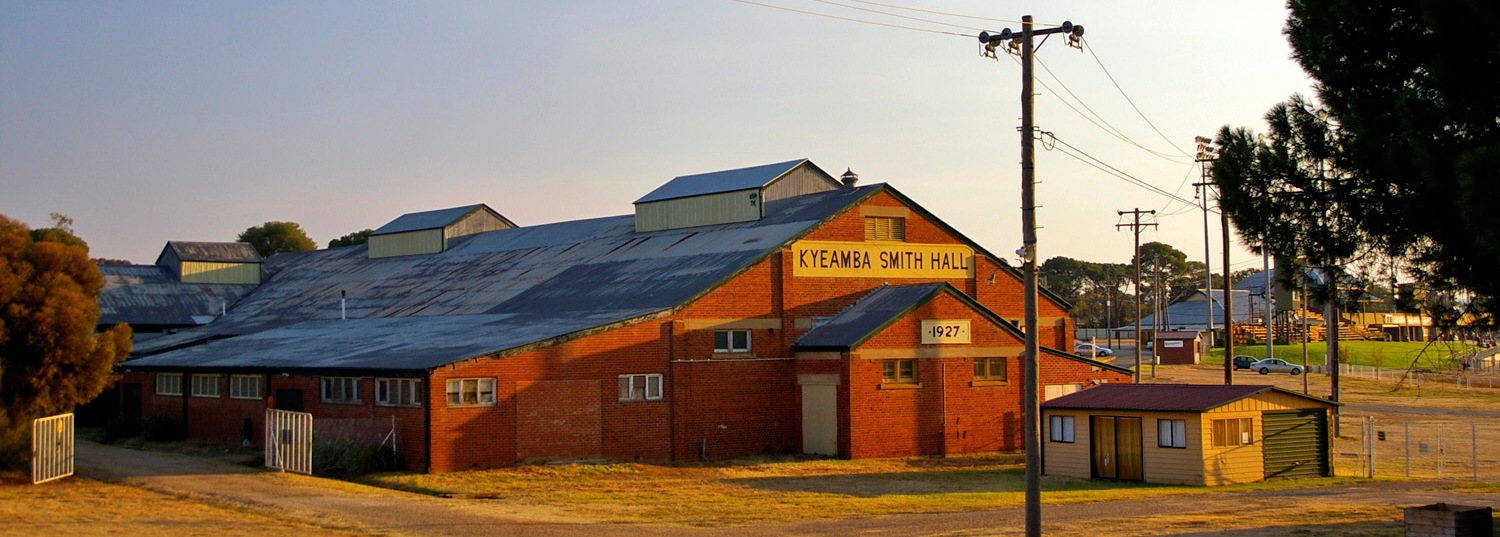
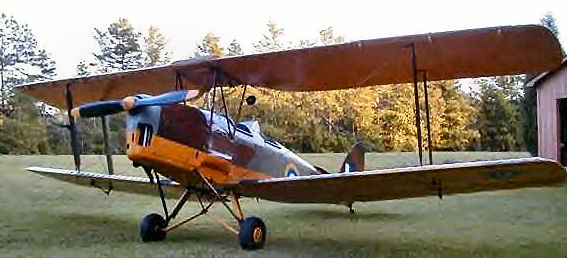 RAAF trained its pilots in
aircraft such as Tiger Moths, (right, of which the RAAF had 861), but in
1947, it had introduced the De Havilland Vampire to its training empire.
This rapid advancement in technology required some serious re-training
of its service people.
RAAF trained its pilots in
aircraft such as Tiger Moths, (right, of which the RAAF had 861), but in
1947, it had introduced the De Havilland Vampire to its training empire.
This rapid advancement in technology required some serious re-training
of its service people. 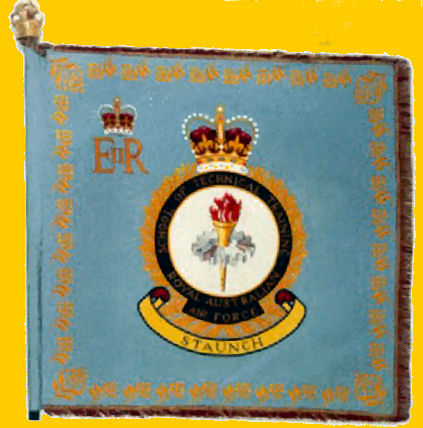
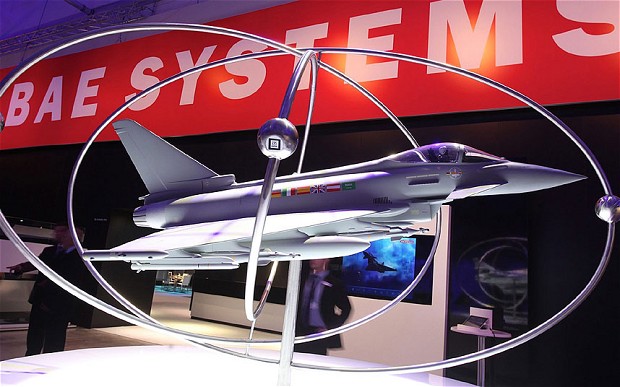 comprising BAE Systems, Royal
Melbourne Institute of Technology (RMIT) and
comprising BAE Systems, Royal
Melbourne Institute of Technology (RMIT) and
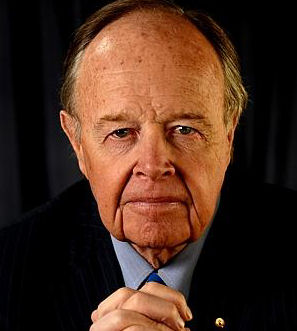
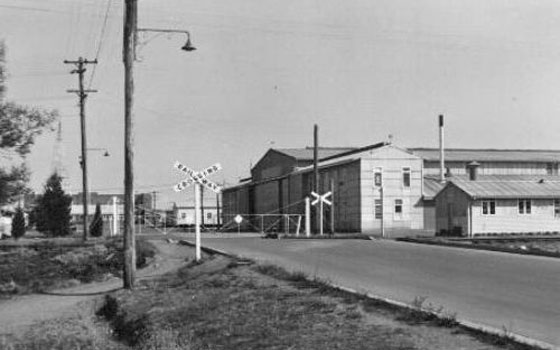 went through the small settlement of Forest Hill and the Wagga Wagga
Municipal Council decided to put their airport close to the line when
they built it in 1938.
went through the small settlement of Forest Hill and the Wagga Wagga
Municipal Council decided to put their airport close to the line when
they built it in 1938.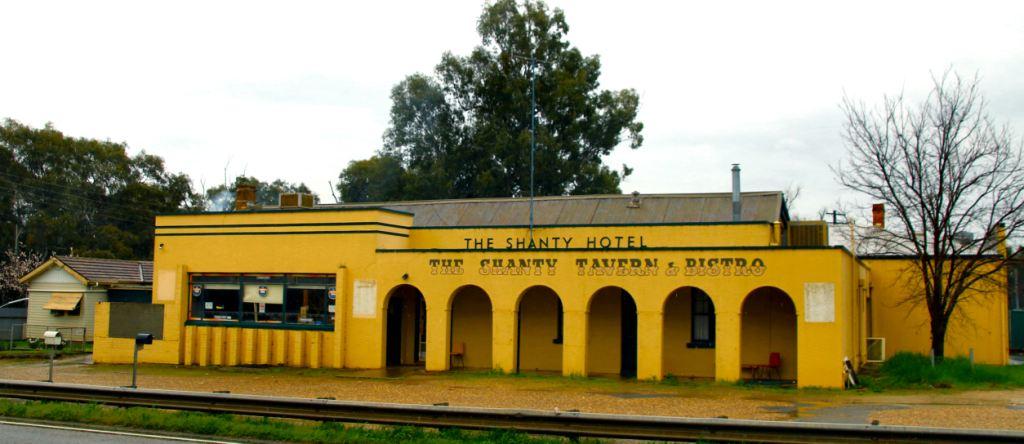
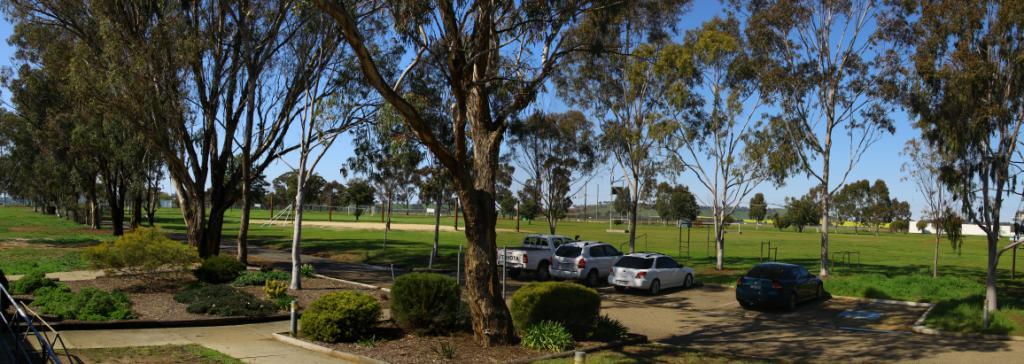
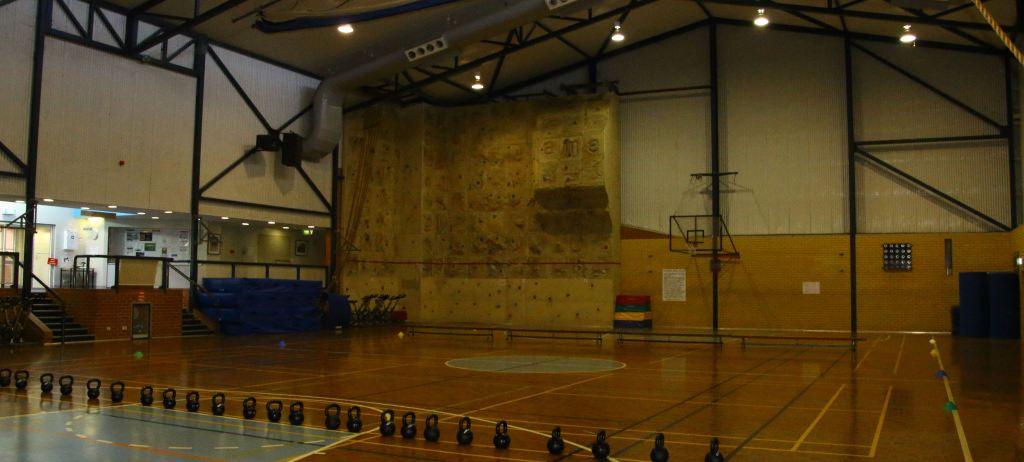
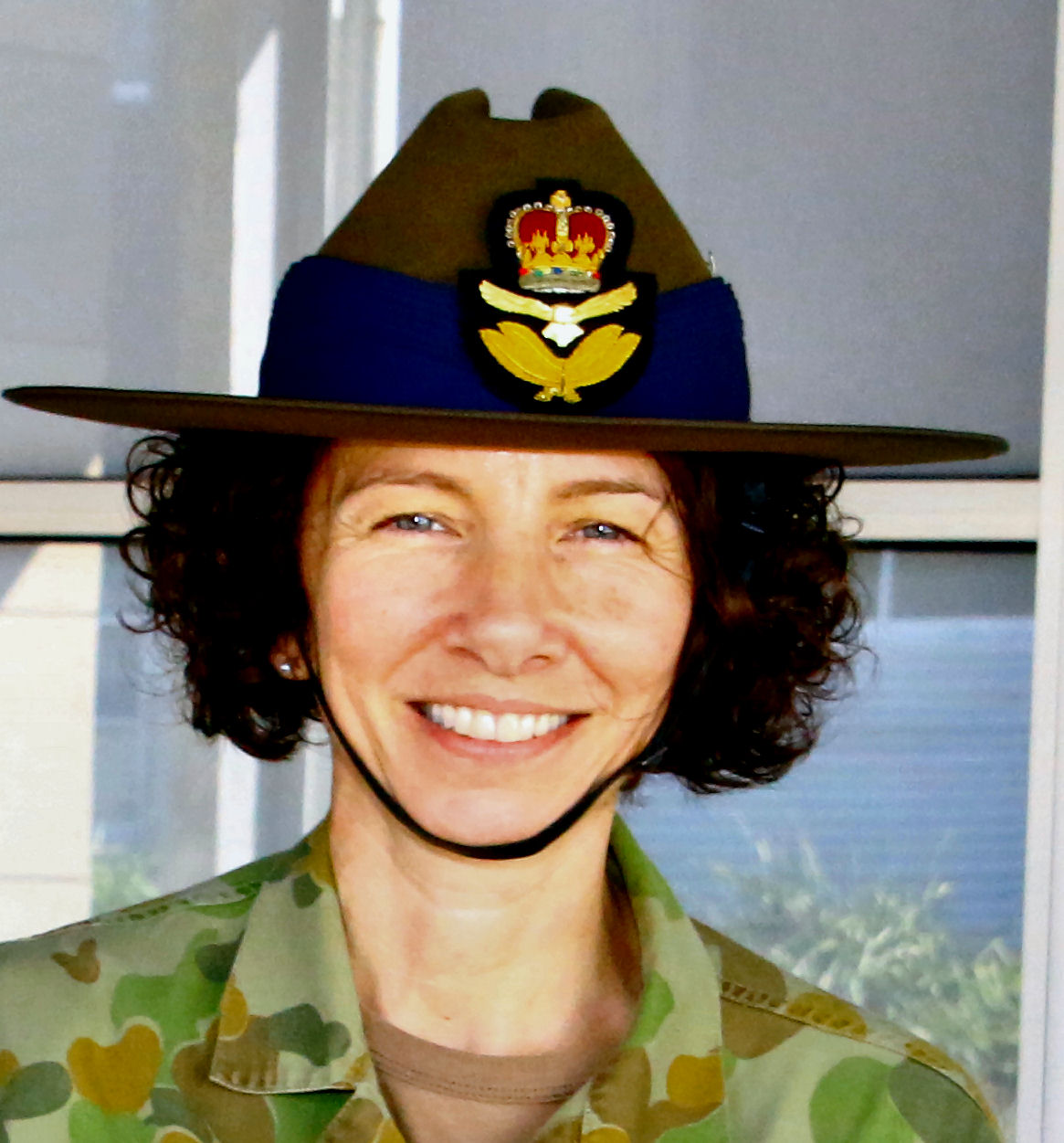 that were purpose built in 2008. In addition to a classroom environment,
recruits are exposed to field conditions in the Ground Defence Training
Area and also undertake live weapon qualification on the military firing
range.
that were purpose built in 2008. In addition to a classroom environment,
recruits are exposed to field conditions in the Ground Defence Training
Area and also undertake live weapon qualification on the military firing
range.